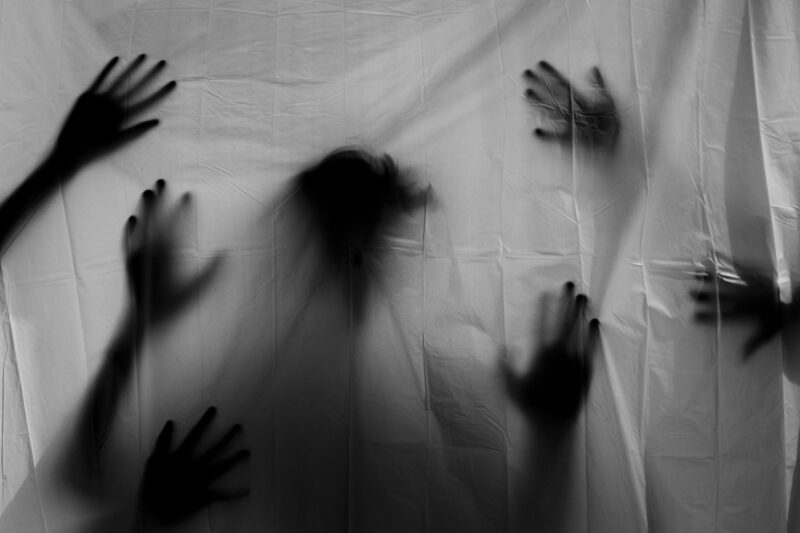The Horror Movies That Explore the Dark Side of Human Nature and Morality
November 17, 2024

Horror films have long served as mirrors reflecting our deepest fears, anxieties, and the darker aspects of human nature. While many may think of horror as simply a genre filled with monsters and jump scares, the best films in this category delve much deeper, examining the moral dilemmas and societal issues that plague humanity. In this article, we’ll explore notable horror films that navigate the complexities of human nature, revealing the terrifying truths that lie beneath the surface.
1. The Basis of Horror: Fear of the Unknown
Understanding horror begins with recognizing how fear of the unknown is at the core of human emotions. From existential dread to the haunting complexities of life and death, horror films often amplify these feelings. Movies like “The Shining” and “Hereditary” don’t just frighten audiences with supernatural elements; they also explore familial bonds, depression, and the legacies we inherit.
In “The Shining”, Stanley Kubrick brilliantly captures the descent into madness fueled by isolation, familial strain, and supernatural forces. It serves as a commentary on the fragility of the human mind and the horrors that can emerge when we find ourselves trapped within our own psyche.
2. The Facade of Normalcy: Everyday Horrors
One of the most chilling aspects of horror is its ability to normalize the grotesque. Films such as “Get Out” and “American Psycho” uncover the dangers lurking within seemingly ordinary lives. In “Get Out”, Jordan Peele indicts the insidious nature of systemic racism, presenting a narrative that explores the horror of cultural appropriation and exploitation under the guise of acceptance. It raises critical questions about identity and the lengths to which individuals go to escape or confront societal expectations.
On the other hand, “American Psycho” captures the emptiness of consumer culture through the disturbing life of Patrick Bateman, a Wall Street businessman whose charming exterior masks depraved violence. This juxtaposition of normalcy and chaos prompts viewers to reflect on morality in a materialist world.
3. The Conflict of Morality: Right vs. Wrong
Horror films often place characters in morally ambiguous situations, forcing them and the audience to grapple with ethical dilemmas. Movies like “The Cabin in the Woods” and “The Purge” challenge our understanding of morality and the consequences of societal choices.
In “The Cabin in the Woods”, the facade of a typical horror film is cleverly dismantled, revealing a commentary on audiences’ complicity in violence. The characters are mere pawns in a larger game controlled by unseen forces, prompting reflection on how entertainment can desensitize viewers to real-life horrors.
Conversely, “The Purge” presents a dystopian society where all crimes are legal for one night each year, exploring the depths of human depravity and the moral implications of such a system. It reflects the fear of unchecked violence while questioning the ethics of survivalism in a brutal world.
4. Psychological Horror: The Battle Within
Psychological horror films dig deep into the human psyche, illustrating the struggle between one’s inner demons and moral compass. Films like “Black Swan” and “Midsommar” showcase how ambition and cultural pressures can lead to horrifying consequences.
In “Black Swan”, Darren Aronofsky tells the story of Nina, a ballerina whose pursuit of perfection leads to a psychological breakdown. The film is a disturbing exploration of identity, obsession, and the cost of artistic ambition, showcasing how the quest for greatness can warp morality and create internal conflict.
Similarly, Ari Aster’s “Midsommar” presents a visually stunning yet deeply unsettling narrative about grief and cult influence. The protagonist, Dani, grapples with trauma and displacement, which are exploited by a sinister community that embodies both beauty and horror. This film highlights how easily one can be seduced by an idealized concept of belonging, leading to moral violation.
5. Social Commentary Through Horror
Many horror films serve as poignant social commentaries, highlighting societal fears and injustices. Works like “Get Out” and “The Babadook” tackle issues such as race, mental health, and grief through a horrific lens. “The Babadook”, for instance, symbolizes the haunting nature of grief and depression, personifying them through a monstrous entity that refuses to be ignored. This film reveals how repressed emotions can evolve into tangible fears, impacting both the individual and their relationships.
Similarly, horror serves as a potent vehicle for discussing gender dynamics, as seen in films like “A Girl Walks Home Alone at Night” and “The Love Witch”. These narratives empower female characters who confront patriarchal systems through horror, positioning them as both victims and victors.
6. Conclusion: The Unsettling Truths of Humanity
In exploring the dark side of human nature and morality, horror films hold a unique place in cinema. They force audiences to confront unsettling truths about society and themselves, often portraying moral dilemmas as reflections of our reality. By engaging with these films, viewers are encouraged to question their beliefs, confront their fears, and explore the boundaries of morality.
As we continue to navigate this multifaceted genre, it remains essential to recognize horror’s capability to provoke thought and discussion. Rather than simply providing scares, these films are valuable cultural artifacts that educate us about the complexities of human existence, reminding us that the greatest horrors often lie within.
Whether you are a seasoned horror aficionado or a casual viewer, consider diving deep into the narratives that challenge and inspire. The next time you view a horror film, reflect on the moral questions it poses. After all, the line between hero and monster is often thinner than we think.






